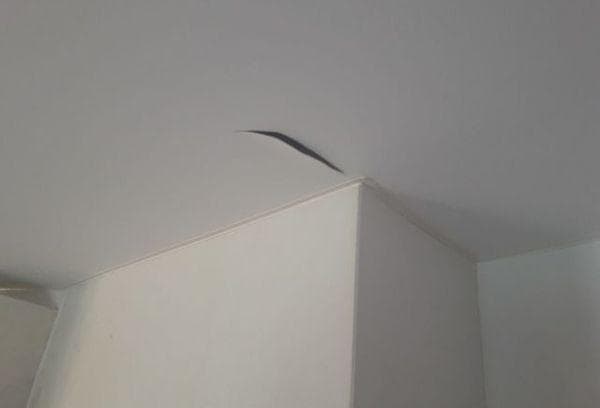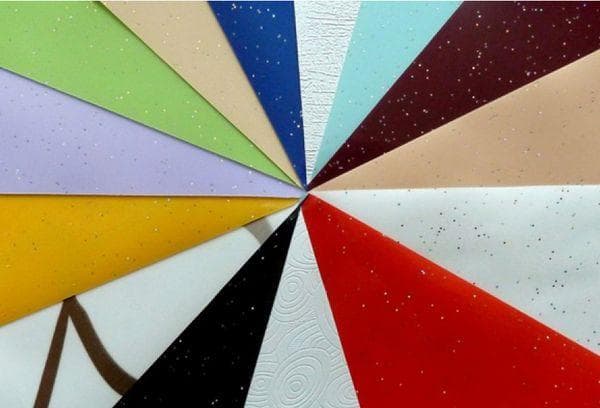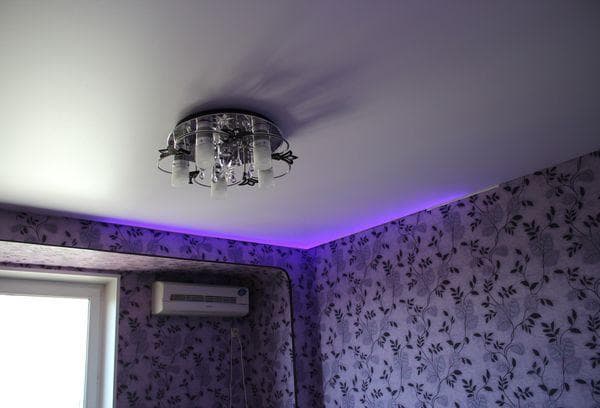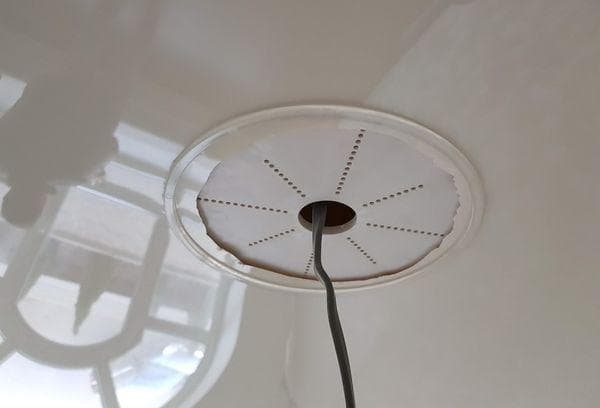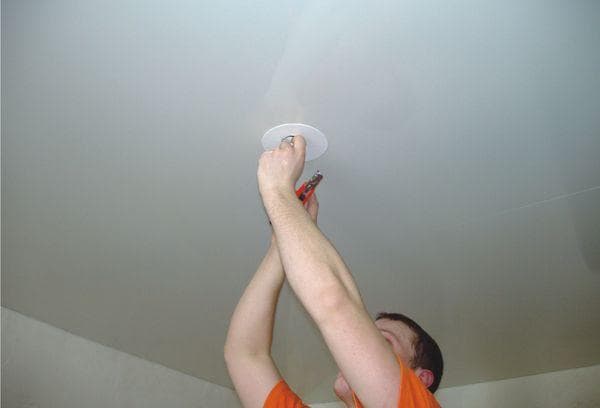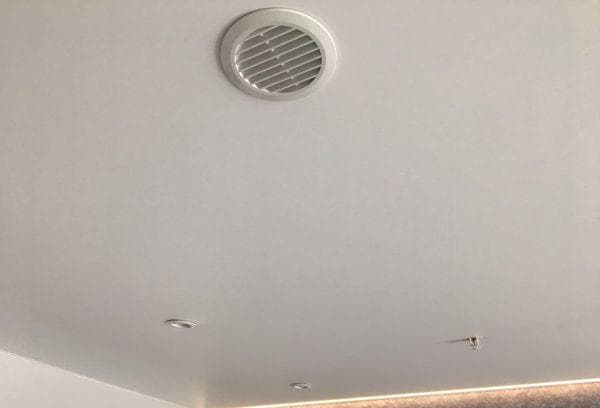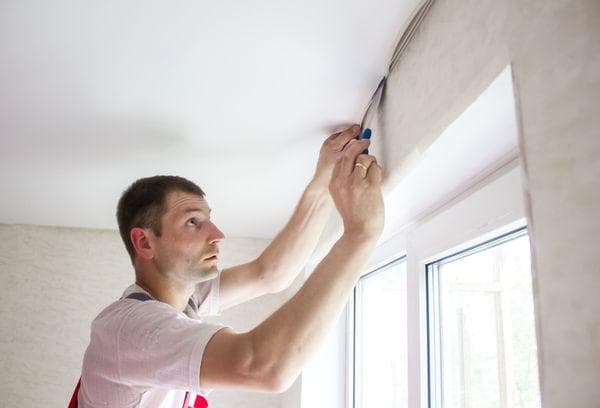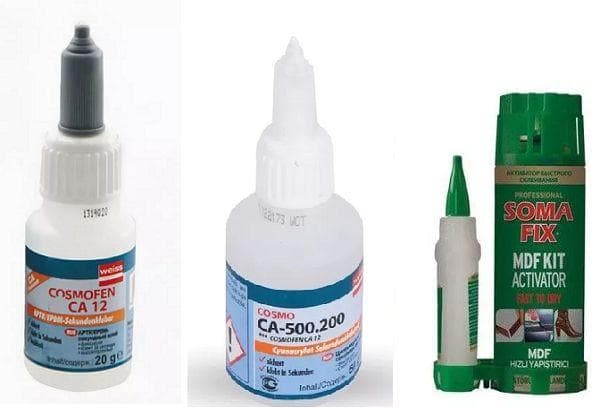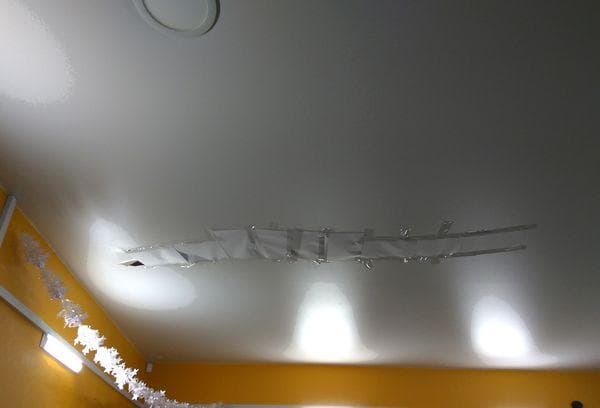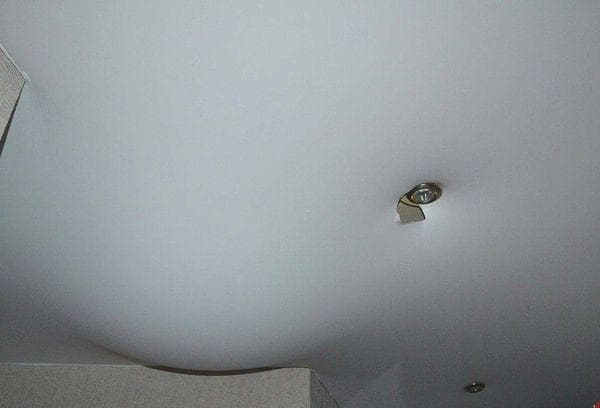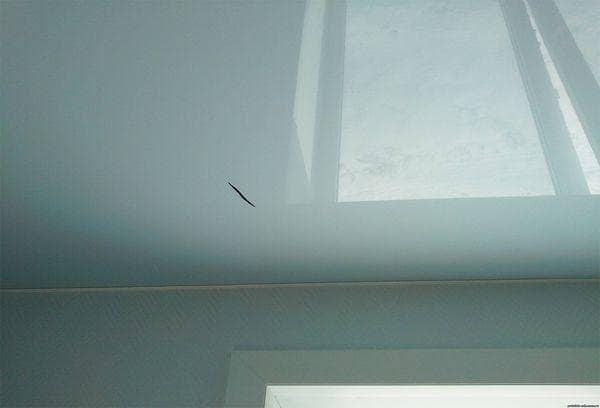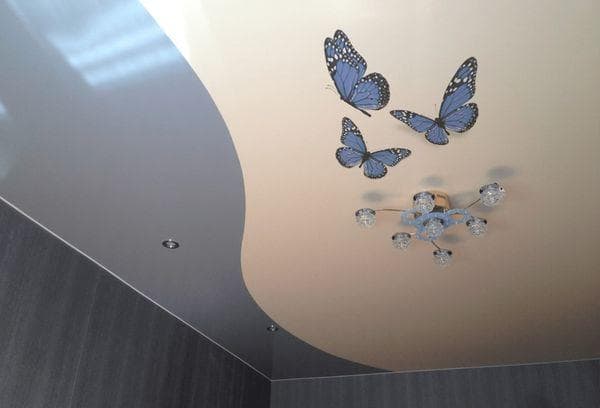How to seal a hole in a stretch ceiling if you accidentally cut the canvas
Content:
A stretch ceiling is a film made of thin polyvinyl chloride or polyester fabric, which can be easily damaged by careless handling. Sometimes cuts, scratches, and punctures appear on it, but you can repair a hole in a stretch ceiling yourself. The owners of the apartment are thinking about replacing the entire canvas along with the defective area, but local repairs can also be done.
What should installers fix?
The installation team provides a guarantee on the canvas and the quality of work, but not all cases fall under it. Sometimes repairs are required after a cut in the canvas due to the carelessness of the owners. Restoration work will have to be done at your own expense. In a warranty case, repairs are performed free of charge to the customer.
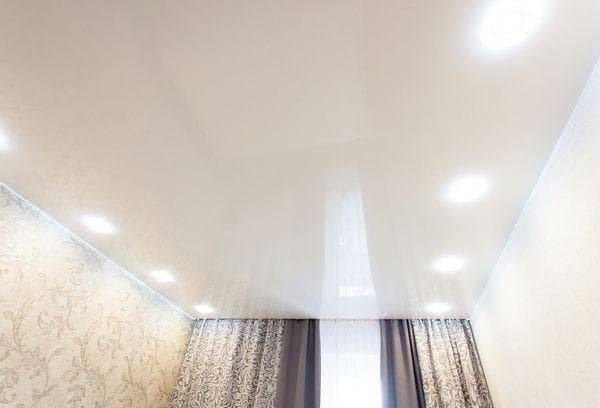
The main such situations are:
- the seam between individual fragments of the film diverges;
- the frame moved away from the wall;
- the film is not fixed in the baguette frame;
- the harpoon (lock with protrusions) comes out of the profile grooves.
The manufacturer is responsible for the strength of the seams; if they come apart, he must carry out repair work free of charge. But sometimes the canvas is damaged by crumbling plaster. Responsibility for such a defect lies with the persons performing the finishing work. If they were carried out by the owner, you will also have to repair the damage yourself.
Types of defects
Most damage can be repaired. But there are also serious defects; eliminating them is problematic, and sometimes even impossible. In this case, you will have to change the entire canvas. A common problem is seam splitting. This happens for a number of reasons:
- the cut was not sealed immediately, and it gradually enlarged;
- ceiling lamps, grilles and other elements were installed carelessly;
- there is no tread ring (fasteners to protect against film rupture);
- Low quality film was used.
These defects are eliminated as follows:
- you can trim uneven edges of the canvas;
- the harpoon is mounted on both sides of the canvas;
- The profile bar is installed on the edges of the canvas, bringing it to the level with the main frame;
- the film is well fixed in the baguette frame.
Small areas of seam divergence can be decorated with a special masking tape to match the stretch ceilings.
What are the dangers of using a stretch ceiling with a defect?
A hole or scratch may appear from accidental damage (careless use of tools during repairs, edges of furniture). A blunt object cannot seriously damage a suspended ceiling, much less make holes in it. But it’s enough to accidentally catch a seam when washing the ceiling, and you’ll have to spend money on repairing it.
Fabric canvas is stronger than PVC film, but it can also be damaged.A cut is a more dangerous defect than a through hole; over time, its area increases due to the tension of the film. A small cut can be quickly repaired, but if this is not done in a timely manner, it will leave a large hole.
How to choose a method based on the type of canvas
To repair a defect, you must first take into account the type of film (PVC, PS). The choice of repair method depends on the type of canvas. The following tools and auxiliary materials will be useful:
- ladder;
- sewing needles;
- heat hair dryer (for the plasticity of the canvas);
- paint roller with a long handle;
- thin rubber spatula;
- container for paint;
- ruler or tape measure, marker for basting.
Each material from which the canvas is made requires different materials, and the procedure is also different. The situation requires a special approach to remove the defect without a trace.
From fabric
This is a polyester fabric impregnated with a polymer composition. Synthetic fibers and natural threads are used for their production. The thickness of such a sheet usually does not exceed 0.37 mm. Fabric film is easier to repair - it stretches less and has a porous structure. Because of this, they are easy to repair and restore. It is necessary to change the entire sheet if the cut is more than 30 cm.
There are several ways to eliminate deficiencies on your own, depending on the type of ceiling. If the fabric option is installed, we can say that this is real luck. Small defects can be eliminated quite quickly and easily.
In the first option, you need to select threads to match (preferably from nylon) and sew up the hole with the edges inward. If the repaired area is very noticeable, it should be painted over with matte paint.
The second option is to use a patch made of glass wallpaper or fabric. It is glued with colorless transparent glue. Then the area is treated with a spray gun with water-based paint.
PVC
The canvas is made from polyvinyl chloride, or more precisely, PVC fibers. This ceiling has a thickness of 0.17 - 0.22 mm and has good strength. PVC can withstand heat up to 100°C and melts at higher temperatures. Does not withstand sudden changes in heat, this may reduce strength.
This fabric is elastic and can be stretched if necessary. But don’t overdo it with this feature – it is easily deformed.
The location of the incision is important. The complexity of the repair depends on this. A small puncture can be repaired quite easily with special glue from a hardware store. This puncture is sealed and the appearance of the ceiling is completely restored. The cut requires more effort and has an increased level of difficulty, but there are still several options.
If the cut is a couple of centimeters from the wall, it can be easily repaired. To begin with, the damaged canvas is removed and a fragment is cut off. The white antenna cable is glued to the edge. When the glue hardens, you need to heat the canvas using a hair dryer for construction work, so the material will become pliable. Then push the open edge back into the fixing profile.
The second method is suitable if the canvas is torn closer to the central part of the ceiling. They put on a patch, for which the stretch ceiling scraps remaining after installation will come in handy. Cut out a fragment of suitable diameter and glue it over the hole with a composition suitable for PVC.
Ways to mask a hole
If a tear accidentally appears on the ceiling material, it must be strengthened along the edges.The torn fabric quickly diverges under its own weight. Masking tape or other flexible adhesive tape is suitable for this purpose.
Additional lamp
If a ceiling defect appears near a lighting fixture, there is a simple solution to mask it. The option is suitable for fastening with harpoons, but you will have to partially remove the structure and have some skills in handling electrics. The process itself looks like this:
- Partial dismantling is carried out at the place where the cut is located.
- A mortgage is attached to the ceilings at the place where the lamp is located.
- Then the wiring and connection to the network are laid, the canvas is fixed in its original place.
You need to glue a special thermal ring, cut out the film and take out the electrical cable. You shouldn’t limit yourself to just one lamp; they can be arranged in a whole group.
Vent. hole or sensor
A diffuser is installed if the cut is in a corner. Its size should cover the length of the cut itself. The repair algorithm looks like this:
- Glue a plastic ring to the stretch ceiling fabric so that the defect is located inside it;
- if necessary, you need to trim the canvas itself;
- insert the grid.
This method is suitable for all ceiling materials and all types of fastenings. The diffuser provides additional air ventilation. In addition to the cut, sticking and sagging of the canvas can be eliminated.
If the hole is near the edge
The repair method is suitable for a structure made of film mounted on harpoons. But the distance between the hole and the wall should be no more than 15 cm. In this case, the ceiling is repaired as follows:
- partially remove the harpoon from the baguette where the damage is located;
- cut off the area with the hole;
- glue the edge to the main fabric in increments of several centimeters;
- heat the film with a hairdryer;
- cover the edge with a baguette frame.
It is permissible to trim the edge of the canvas with scissors. Vinyl film stretches well and if all manipulations are performed carefully, after repair the surface will look like new.
Glue
To repair a suspended ceiling, you will need a reliable composition that will fix the canvas and not damage it. These compositions are shown in the table:
| Type of glue | Description |
| Cosmofen | quick-setting adhesive, resistant to temperature loads, provides good strength and is completely safe for humans, environmentally friendly |
| Somafix | plastic composition, does not lose its properties when dried, sticks well, does not require degreasing the surface before application |
| Cosmoplast | the manufacturer of this composition produces a wide range of similar adhesives, but only three of them can be used to repair ceilings - these are 500, 500L, 513 |
| Adhesive Contact | glues PVC fabric well and firmly |
If the hole is 1-3 mm in size, it can be eliminated by generously moistening it with glue (blotting it with a brush or roller). This way the puncture will be completely invisible and will not increase in size.
Patch
This method can be used to repair small cuts. The easiest way is to attach it on top of the hole; to do this, you need to follow these steps:
- cut out a patch of the required size from the fabric so that the hole is completely covered by it;
- coat it with adhesive;
- attach to the ceiling;
- smooth out efficiently and tightly.
If the patch color and glue are chosen correctly, the damage will not be noticeable. If possible, it is better to partially dismantle the ceiling and carry out cosmetic repairs from the inside.
Decor elements
If it is impossible to hide the patch, it can be turned into a decorative element. This will make the ceiling design more individual. Decor is sold in construction stores. You should carefully press the sticker onto the patch or hole (the hole should be smaller in diameter than the decorative element).
Water breaks
When flooded, a suspended ceiling can withstand a large volume of water. The fabric itself ensures tightness. PVC stretches better than fabric and is able to retain water, thereby insuring the safety of the apartment’s finishing.
To drain the water, you need to make several punctures - one in the center of the formed “drop”, the second - where there is no water. They can be made with an awl or a thick needle. If there is not much water, the material will return to its original shape after draining the water.
A fabric ceiling can tear due to a large volume of water, since such material has less stretch than its PVC counterparts. Also, after water there will be stains on the surface that can be removed with paint.
When do you have to do a complete replacement?
Incorrect cutting or overstretched fabric can cause seams to separate. In this case, repairs will not help; you need to install a new ceiling. To do this, you need to contact the manufacturer.
A large hole from fire or water will also require replacement of the entire canvas, since large damage cannot be repaired. Incorrectly installed strips can also damage the canvas and cause cracks and tears.
Useful tips
To extend the life of the ceiling, there are some recommendations:
- Before fixing the patch, you need to degrease the surface locally to improve the properties of the glue;
- use special sprays, dish soap, non-aggressive detergents to wash the ceiling;
- it is necessary to take all necessary measures immediately after discovering a defect so that the incision does not expand;
- if the image is damaged, you will have to replace it with a new design or additionally decorate this place;
- Before carrying out repairs, you must make sure that the cut is not caused by a manufacturing defect or installation defect (if so, the repair will be carried out under warranty).
A company employee will carry out all necessary repairs and provide a warranty period for them. Rupture of seams can be done without replacing the entire ceiling; more often, this requires minor cosmetic repairs. Owners repair mechanical damage caused by the owners at their own expense.
Precautions to maintain the integrity of the stretch ceiling
Often repairs are required within the first week after installation, since the canvas has not yet shrinked and is under overload. But usually damage occurs due to improper installation. In this case, you will have to resolder the fabric using special equipment from the manufacturer.
The most common causes of damage are the following:
- careless games of children with plastic arrows, radio-controlled toys;
- installation of tall furniture, for example, a wardrobe;
- temperature changes, since during installation the canvas heats up; if the window is opened after this, the canvas may be damaged;
- defects made during the production process.
It is not recommended to repair breaks near walls. To do this, it is better to call a specialized team of workers who have the necessary skills, knowledge and equipment.
Questions and answers
How to fix the ceiling to the wall?
The edges of the canvas may move away from the wall if the frame is not securely attached, a large step is taken, or bad screws are used. The loose structure of the walls themselves (plasterboard, aerated concrete) may also be to blame. In this case, poor tension is formed, leading to the appearance of cracks. To fix this, you will need to dismantle the canvas where the cracks form and re-fix the baguette.
When should you not fix the ceiling yourself?
If the ceiling was installed independently, repairing it yourself will not be difficult. If you don’t have such experience, you shouldn’t carry out such work yourself. It is worth remembering that attempts at self-repair will void the warranty obligations of the installer.
The stretch ceiling can be torn or pierced by careless actions. But often it is not necessary to change it completely; it is enough to perform local repairs or cosmetic actions. In case of serious damage, you will need to replace part of the ceiling with a new one, but this costs less than replacing the entire ceiling.
